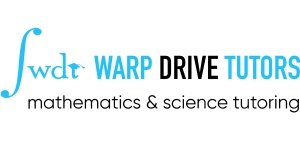IB® Standard Level Applications and Interpretation
Some Basics:
Many teachers refer to this course as “The New Studies”, and its content is very similar to the old Mathematical Studies SL course. The content overlaps significantly with GCSE Mathematics, but contains more new topics than the Studies SL did. It is roughly three quarters of pure mathematics and one quarter of statistics. The course includes one piece of coursework (Internal Assessment) worth 20% of the grade and two calculator exams. In line with the IB®’s commitment to developing problem solving skills, many of the questions require novel applications of the taught mathematics, adding another level of challenge.
Pure topics usually covered include:
- Sequences and Series: arithmetic and geometric, amortization and annuities
- Number: exponentials, standard form, upper and lower bounds
- Modelling: curve-fitting to polynomials, trigonometric, exponentials, logarithmic
- Algebra: quadratics, solving simultaneous equations
- Geometry: Voronoi diagrams, sectors, volumes and surface areas of 3-d shapes
- Trigonometry: right angled trig, sine and cosine rules, bearings
- Co-ordinate Geometry: finding equations of lines, midpoint, distance, equation of perpendicular bisector, proof
- Calculus: differentiating and integrating polynomials, equations of tangents and normal, limits, maxima and minima, optimisation, trapezium rule
Statistics topics usually covered include:
- Graphs: histograms, cumulative frequency curves, box and whisker plot
- Regression: correlation, regression equation, Spearman’s rank
- Random Variables: pdfs, expectation, Binomial, normal, linear transformations
- Hypothesis testing: significance levels, critical values, Chi Squared, t-tests
- Probability: successive events, conditional
Typical problem areas include:
- Finding the equation of a line through a point that is not the y-intercept
- Finding the lower bound when division or subtraction is required
- Understanding hypothesis testing
- Word problems, especially with sequences
- Graphing the gradient of a function
- Finding a suitable IA topic
How a tutor can help:
The IB® Diploma is internationally recognised as a rigorous programme for the intellectual elite. It is highly desired by universities and employers because it certifies a candidate’s competency across a wide range of areas. Of course, this is also what makes it hard. Students who do not enjoy maths, or find it difficult, still need to pass their exam in order to earn their diploma. Anyone can learn maths, but for some people it takes more time. A lot more time. And as you know, time is one thing IB students don’t have! Working one-to-one is the most efficient way to learn and your tutor will immediately see any gaps in your knowledge and work with you to address them. The experience our tutors have gained in the classroom has equipped them with an extensive knowledge of the style of questioning you will find on the paper and which questions students will find most challenging. If you find that you are spending more time on your maths than your HLs, or if you know you’re struggling but don’t know where to start, we can help.
